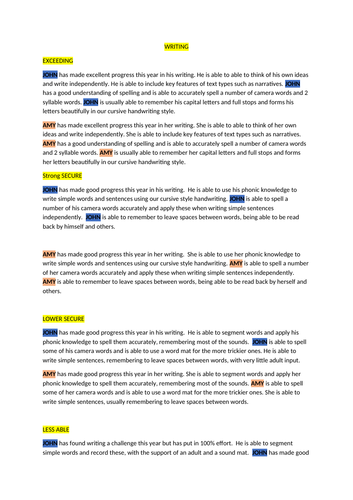
35Uploads
11k+Views
560Downloads
Math for early childhood

Number zoo flash cards number recognition
Flashcards number 0 to 9 for early number recognition. Each flashcard comprises of a 'zoo' character which goes along with a story. For example,
Number 0 is entitled 'Greedy zero' who is a big gorilla who eats all of the bananas... and this is why he is called greedy zero! The zero is the key feature, along with all the numbers on the animals, as it helps children to visualise and remember the number.
All of these numbers have been inspired by a programme which is no longer available to purchase as it is discontinued. I have hand drawn and painted the animals. All animals number 0-9 are available to print and are sized A4.

EYFS 4 Can Play Here sign
Signs to display in areas of provision ‘4 can play here’ with mathematical representations of making four. Each sign is different. 4 included in the pack.

Report templates EYFS
EYFS Development Matters - Report Templates with statements with an exceeding (more able), expected (core) including an upper core and an emerging (less able) statements. These are generic for a typical child so they would need to be adapted where neccesary to be an accurate description of the child you’re writing a report on. There are statements for the core areas; Literacy - writing and reading and Maths - number and space, shape and measure. These have been written and used by me on two years worth of reports.

Number bonds to 10 - EYFS flipcharts
Active inspire flipcharts for learning number bonds to 10 using numicon, 10 frames, visuals and other supporting resources.

Deal or No Deal Game (printable)
‘Deal or No Deal’ game - printable - ideal for learning maths and numbers or playing in a social group and learning about money. Could easily be adapted for spelling, phonics or anything vocabulary related!
-Deal or no Deal front cover (ideal to stick on an envelope/box to decorate the game or to excite children!)
-Printable labels numbers 1 to 13 (could be stuck on boxes, envelopes, bags pr laminated etc.)
-Printable labels (with amounts on OR blank to be edited to whatever focus you want the game to have) These are designed to be held by other players (audience) or hidden depending how many children are playing.
-Blank templates to edit and add own numbers/vocab etc.
How to play?
Either with a group of children (up to 13 or 26 - in pairs)
One person is the ‘main player’ (this could be a child or teacher) with one box
Everyone has has an envelope/box with one of the amounts on, inside one of the numbers 1-13)
The ‘main player’ choses which number from 1-13 they want to eliminate from the game. They continue going until they reach the end and decide whether to keep their box or swap it for the other player.





